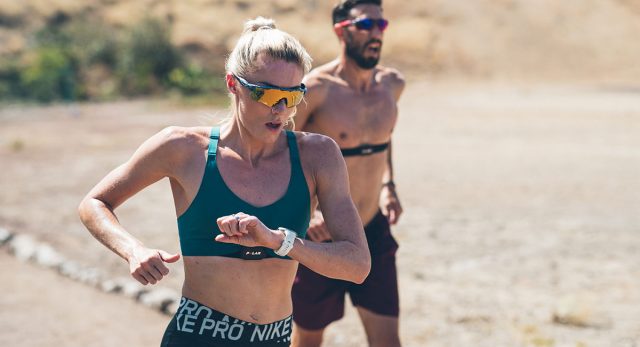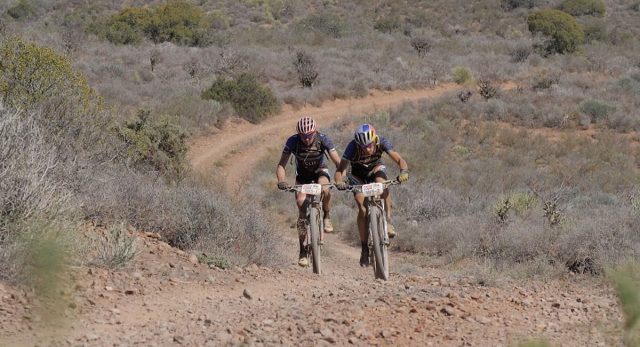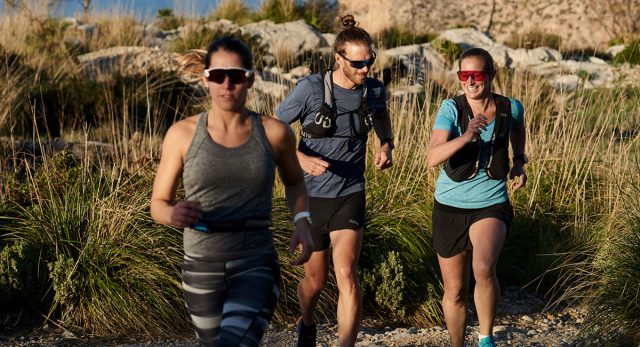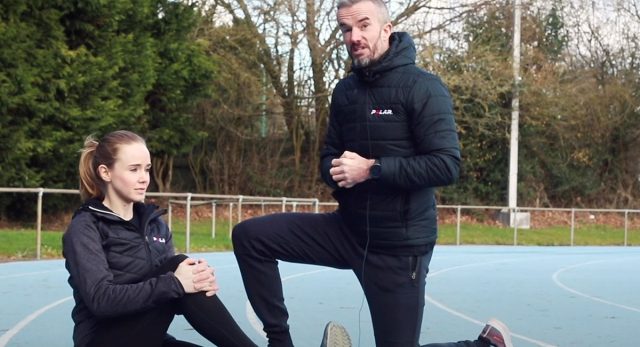Proper running form is not something that comes overnight. In fact, if you try to change your running technique too quickly you’ll likely end up doing more harm than good. Go through this list of five tips for better running technique, watch the demonstrations and introduce changes slowly.
You’ll thank us later.
1. Increase running cadence
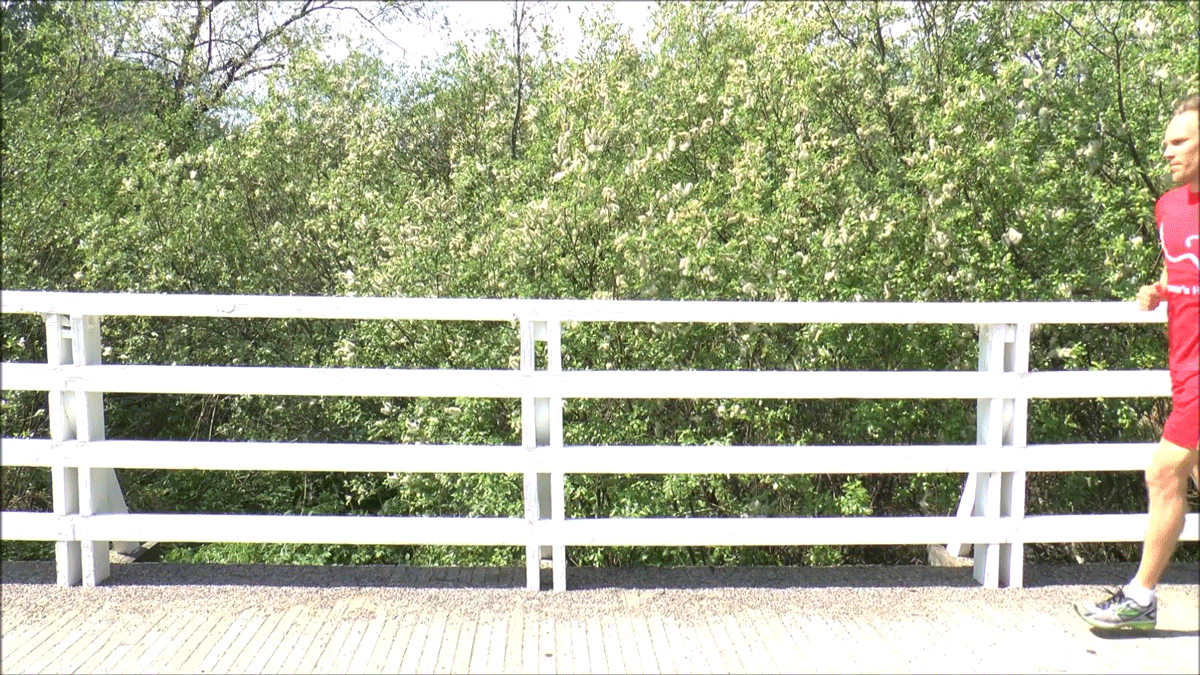
Midfoot strike
Many runners run with a cadence that’s too slow. Their feet hit the ground in front of their body of mass and their step is not rolling economically. This is called overstriding.
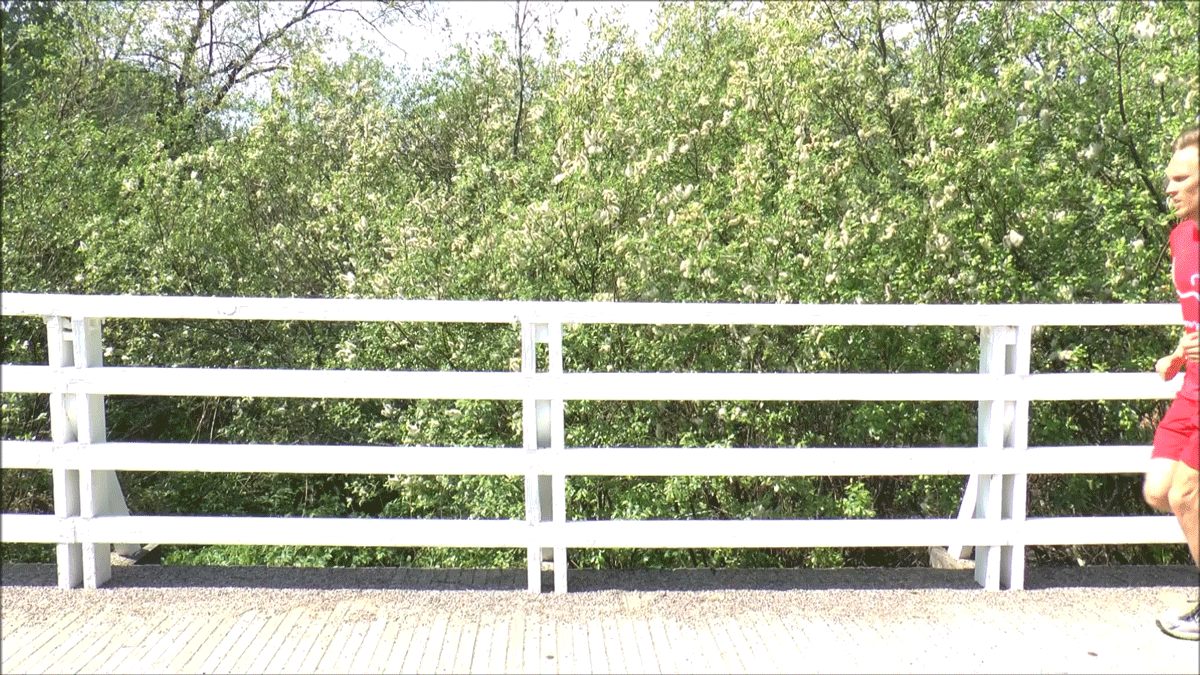
Heelstrike
When you overstride, you’re effectively braking against your forward momentum which makes running a lot heavier. To avoid overstriding, aim to hit the ground with the middle of your sole and avoid excessive heel striking. When you’re running at a lighter pace, avoid landing toes first.
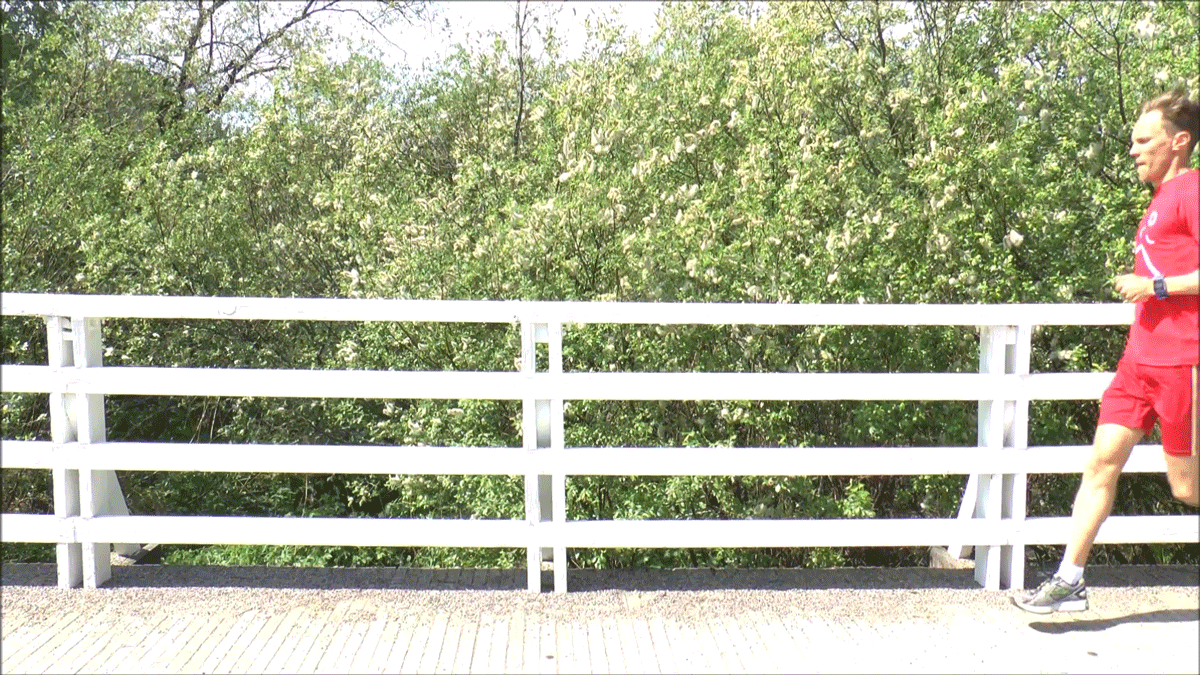
Forefoot strike
There is no such thing as optimal, universal running cadence. That is, a cadence that works for a sub-3-hour marathoner might not work for you (and even if it does, that won’t automatically make you a sub-3-hour marathoner, for that matter).
2. Relax to maintain an effortless running form
Running is easy when it’s relaxed.
When you look at elite runners, their running form often looks effortless. Their pace looks much more laid-back than what it really is.
Running is easy when it’s relaxed.
Focus on keeping yourself straight and relaxed: let you cheeks wiggle and enjoy the ride. Avoid running at maximum pace even during the toughest intervals as you’ll tense up and your running technique will suffer.
It’s better to give only 95% even during the toughest exercises than to squeeze out everything you got.
3. Proper running form extends all the way to the upper body
Arms are more important in running than many people think.
Your arms are meant to balance the body while the legs are moving. Elbows make up for a great deal of kinetic energy and therefore they should swing forward and back, avoiding unnecessary lateral movement. A suitable elbow angle is about 90 degrees. Keep your hands in unclenched fists and let them swing easily besides your race bib.
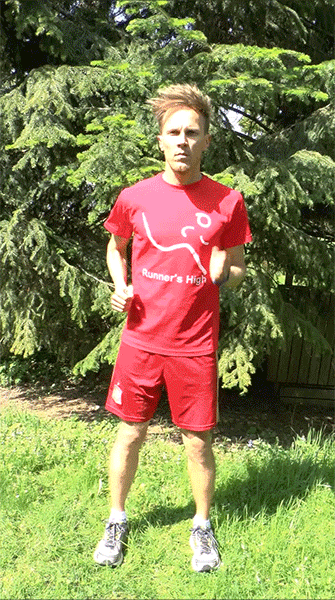
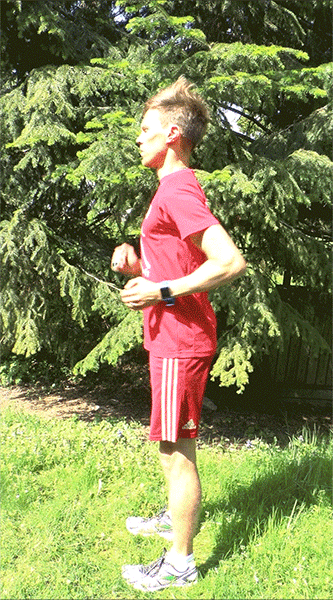
At a tougher pace, using your arms becomes increasingly important. Your shoulders should be as relaxed as possible and you should also remember to invest in upper-body flexibility and mobility as well as muscle strengthening when you do supportive exercises.
A stiff upper body also affects the lower body and causes unnecessary rotation to the legs as well. You can practice arm movement for example in front of the mirror with the help of the exercise above.
4. Running technique exercises to hold proper running form
It’s challenging to change your running technique without any special exercises. In running technique exercises – running drills – your technique is divided into parts and attention is given to the right kind of movements, muscle activation, muscular fitness, and mobility in order to enable a better running technique. Doing drills will also make it easier to hold proper running form for longer.
Stay focused when you do these drills and do them when you feel fresh.
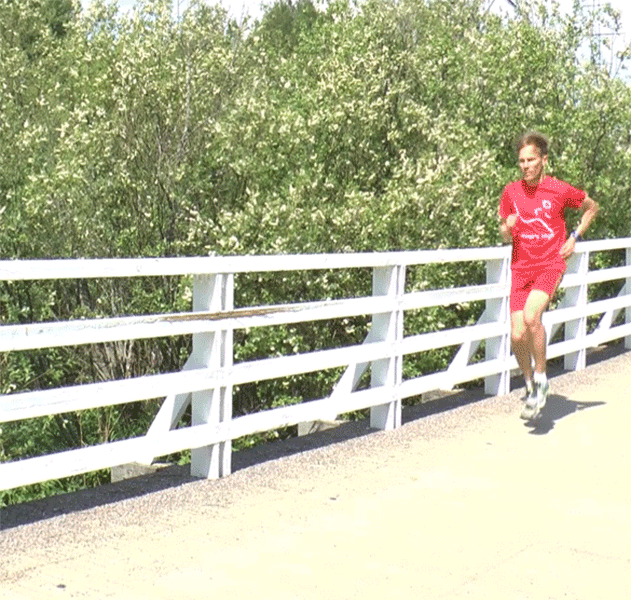
High-knee running
Even though many people set longer runs as their goal, you shouldn’t concentrate on training to become slow. If you want to improve your running technique, it’s better to do short and precise exercises correctly, rather than training slowly for a really long time.
You can try various exercises, like high-knee runs, high-knee walks, jumps and leaps, and versatile mobility and stretching exercises. You can do the exercises as a full workout after a proper warm-up, but you can also combine them for 5–15 minutes with light jogs or do them before the brisker exercises
5. Get your running form right
Avoid an excessively upright form while running. An important part of proper running form is maintaining good posture and leaning slightly forward.
With this kind of running form, you make sure that your feet don’t land too far ahead of your center of mass. A statue-like upright form might look stately it but makes forward rolling running more difficult. And when you get tired, you’re more likely to start leaning backwards.
An important part of proper running form is maintaining good posture and leaning slightly forward.
Controlling your core and making sure you’ve got the required muscle fitness and endurance are key elements of maintaining proper running form. When you improve your muscle fitness, you’ll be able to keep up a good form during longer runs.
You can also try to activate your muscles before a jog with some strength exercises so you’ll feel strong when you start running.
If you liked this post, don’t forget to share so that others can find it, too.
Or give it a thumbs up!
I like this article
Please note that the information provided in the Polar Blog articles cannot replace individual advice from health professionals. Please consult your physician before starting a new fitness program.


